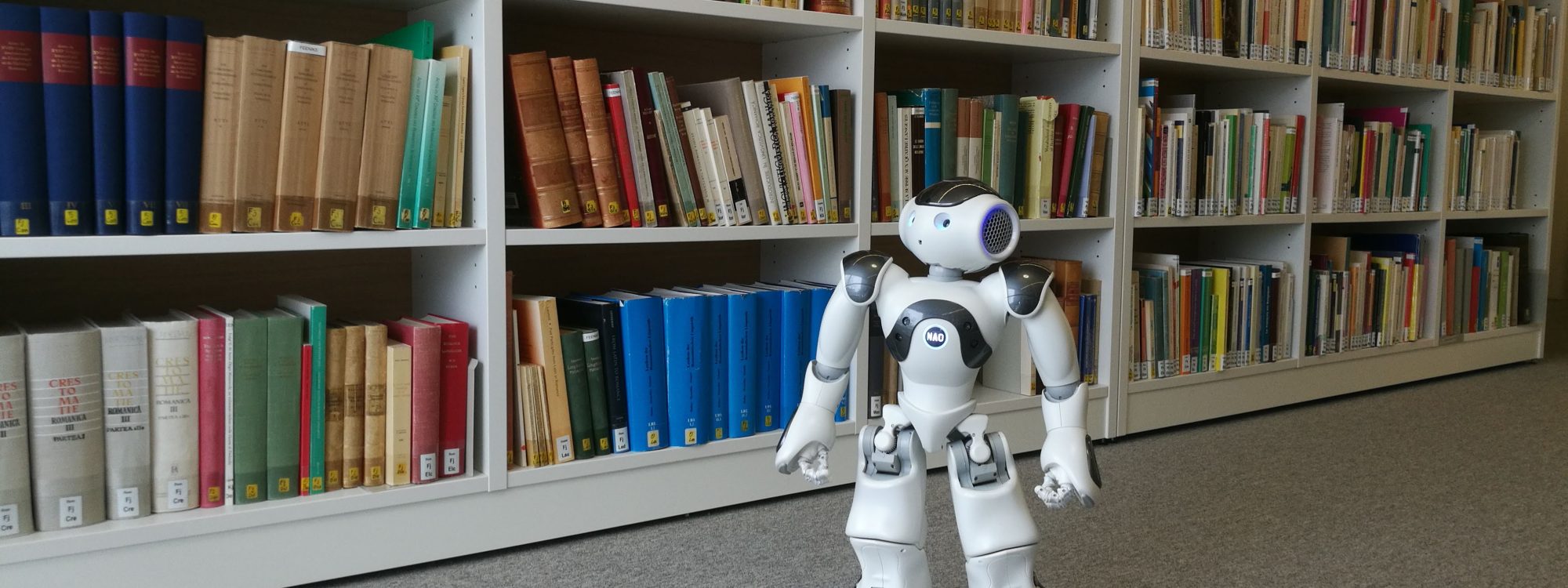Projects
Interaction between a Foreign Language Learner and a Social Robot with AI
The exponential development of artificial intelligence is shaping society. A key part of this evolution is understanding how humans interact with technologies that are designed to be communicative subjects rather than mere objects. This is particularly important when assessing the potential of AI in education and its potential future impact on society.
This project aims to investigate how foreign language learners interact with a robot that uses a generative language model. Rather than focusing solely on the robot or human perspective, their mutual interactions are studied. This research explores the social practices of humans conversing with robots by examining how the interaction between humans and robots is structured on a turn-by-turn basis.
Hilla-Marja Honkalammi is a PhD student at the department of French at the University of Turku. This PhD project is funded by Kone Foundation 2025–2028.
Child-Robot Interaction and Robot-Assisted Language Learning
In this project we study human–robot interaction (HRI). We focus particularly on child-robot interaction (CRI) in foreign language or second language, in school context. Our objective is to study how verbal and multimodal interaction takes place between humans and robots. We are interested in how children respond verbally and emotionally to robots in language learning situations as well as what kind of problem-solving situations children have in communicating with robots. In learning situations, the role of the teacher changes to a facilitator or a mediator in the communication.
A social robot is an autonomous or semi-autonomous robot that communicates and interacts with human beings according to certain communicative practices that are familiar in given socio-cultural context. Interactive situations involving social robots are multimodal, as the robots can be programmed to use both verbal and nonverbal means of communication, such as movements, gestures, and gazes.
2019-2025
Telepresence Robot Mediated Embodied Interaction
See “Telepresence robot mediated embodied interaction in hybrid language learning environments” in “Funded projects” here
Interaction in French: Robot as a Support for Language Learning
Liisa Peura is a PhD student at the Department of French at the University of Turku. Her main interest is in interaction and FL learning in school contexts – child-robot interaction and new creative pedagogical designs, affective reactions to RALL and willingness to communicate. She has worked as a French teacher developing language learning in Espoo for quite some time already and now her inspiration is to bridge pragmatism and research through language learning at school.
